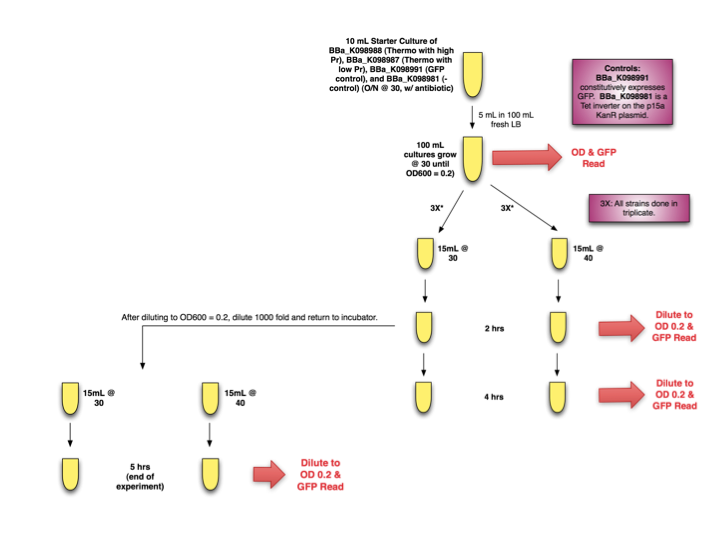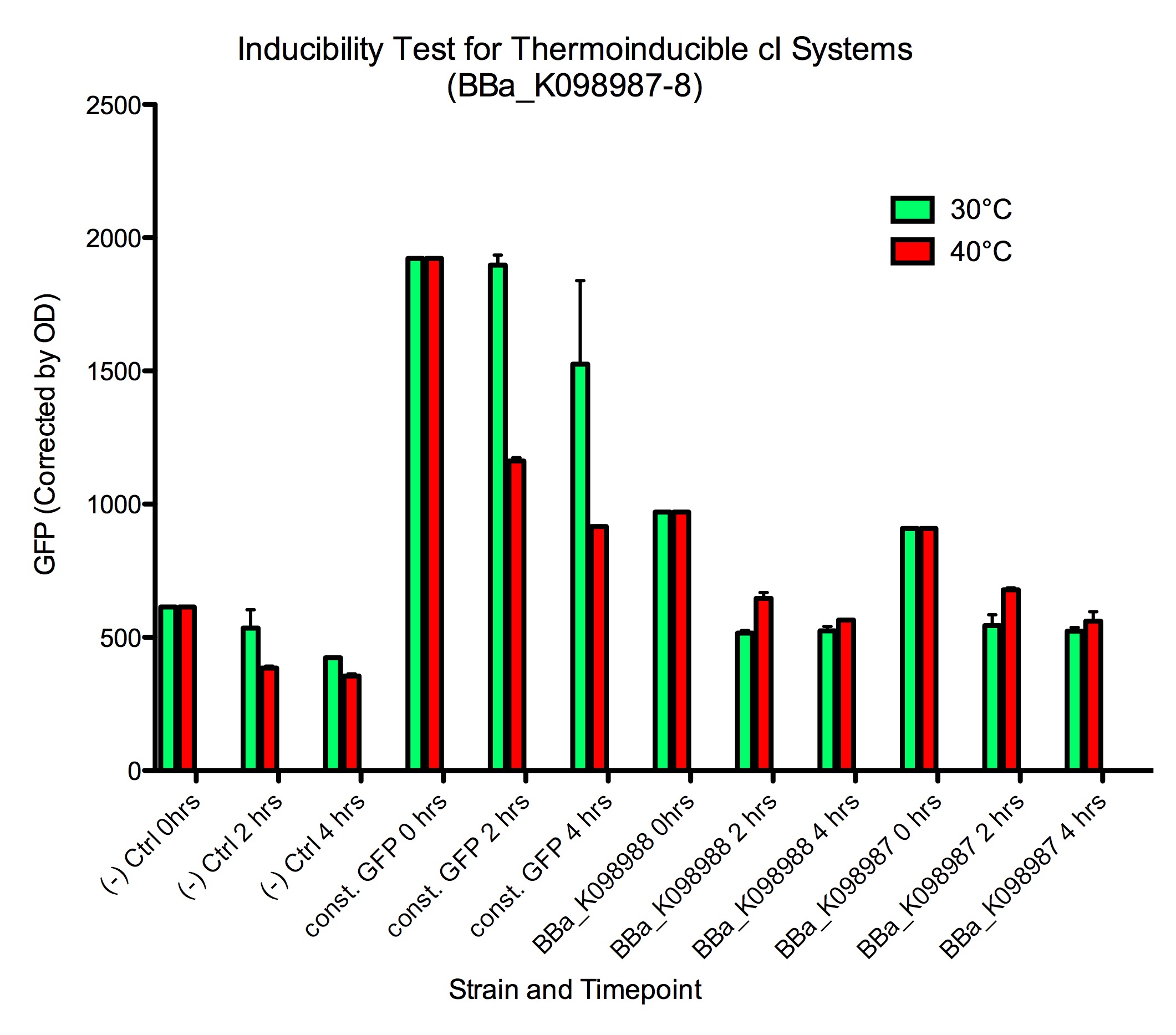Project Overview
Thermoinducible cI System
This system uses a a temperature sensitive variant of cI lambda to regulate the lambda promoter.
The thermoinducible cI lambda system uses cI857 (a mutant form of cI from [http://www.addgene.org/pgvec1?f=c&vectorid=5079&cmd=genvecmap&dim=800&format=html&mtime=1188314819| pGW7] purchased from [http://www.atcc.org/ATCCAdvancedCatalogSearch/ProductDetails/tabid/452/Default.aspx#40554| ATCC]) to regulate expression of genes under the control of the lambda promoter. The cI857 repressor is repressed by thermal denaturation. Activity of cI857 begins to decrease around 30 ºC and is fully denatured by around 42 ºC (Leipold et al., 1994). Thus transcription of the gene under the control of the lambda promoter can be induced by increasing the temperature from 30 ºC to 37 ºC-40 ºC.
BBa_K098995
This is a thermosensitive cI inducible system driven by a strong promoter.
BBa_K098993
This is a thermosensitive cI inducible system driven by a weak promoter.
Inducibility Test for Thermosensitive cI Systems with GFP Reporters
An induction test was designed to test the inducibility of the heat sensitive cI systems. Two constructs were made:
BBa_K098988
This is a thermosensitive cI inducible system driven by a strong promoter and with a GFP indicator.
BBa_K098988
This is a thermosensitive cI inducible system driven by a weak promoter and with a GFP indicator.
Experimental Design
 Thermo Induction Experimental Design
Starter cultures of E. coli with [http://partsregistry.org/wiki/index.php?title=Part:BBa_K098988| BBa_K098988] and [http://partsregistry.org/wiki/index.php?title=Part:BBa_K098987| BBa_K098987] were grown overnight. They were then diluted and grown to OD 0.2 before separation into induced (40 ºC) and uninduced cultures (30 ºC). OD and GFP readings were taken at time 0, 2, and 4 hours. Additionally, after diluting T=2hrs samples to OD 0.2 for accurate GFP measurements, samples were further diluted 1000x, induced (or not induced) again, and placed back in their respective incubators until the end of the experiment, when OD and GFP readings were taken.
Results
Slight induction of GFP expression was observed at both 2 and 4 hours after moving samples to 40 ºC. However, since levels of GFP expression in the GFP control ([http://partsregistry.org/wiki/index.php?title=Part:BBa_K098991| BBa_K098991]) went down in samples at 40 ºC, it is possible that the heat affects the ability of constitutive GFP reporters to generate GFP expression. This makes it unclear how much GFP expression is actually induced by the temperature change. A slight decrease in baseline fluorescence was also observed in negative control cells ([http://partsregistry.org/wiki/index.php?title=Part:BBa_K098981| BBa_K098981]).

Results from the 1000x dilutions were inconclusive because the E. coli grows much slower at 30 ºC than at 40 ºC, so by the end of the experiment, there was a vast difference in cell concentration between the two sets of samples.
|